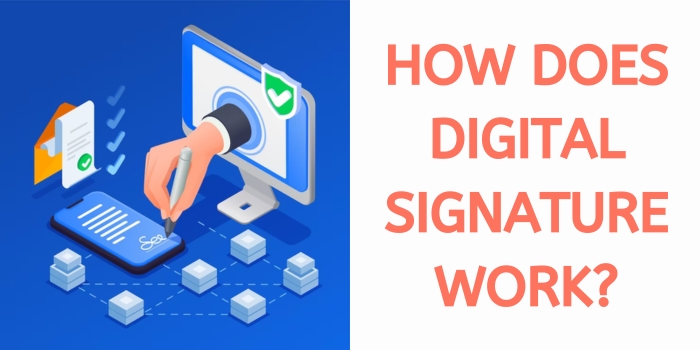
Table Of Content
- Understanding Digital Signatures
- Components of a Digital Signature
- Key Generation
- Creating the Digital Signature
- Verification Process
- Non-Repudiation
- Benefits of Digital Signatures
- Challenges and Considerations
- Conclusion
In the digital age, where online transactions, contracts, and communication have become the norm, ensuring the authenticity and security of digital documents is of paramount importance. This is where digital signatures step in. Digital signatures provide a secure and efficient way to verify the identity of the sender, ensure the integrity of the content, and establish the non-repudiation of digital documents. In this blog post, we’ll delve into the fascinating world of digital signatures and explore how they work to protect your online interactions.
Understanding Digital Signatures
At its core, a digital signature is a cryptographic technique that functions as an electronic equivalent to a handwritten signature. It provides a means to verify the authenticity of a digital message, document, or transaction. Digital signatures confirm the identity of the sender and ensure that the content has not been altered since it was signed.
Components of a Digital Signature
A digital signature in Delhi consists of two main components: the private key and the public key. These keys are part of a key pair that works together using asymmetric encryption. The private key is known only to the signer and is used to create the signature. On the other hand, the public key is distributed to others and is used to verify the signature.
Key Generation
The process begins with the generation of the key pair. The private key is securely stored on the signer’s device and must never be shared. The public key, however, can be freely distributed without compromising the security of the signature.
Creating the Digital Signature
When a signer wants to digitally sign a document, the document undergoes a mathematical process known as hashing. A hash function converts the content of the document into a fixed-size string of characters, often referred to as the message digest or hash value. This hash value is unique to the specific content of the document.
The signer’s private key is then used to encrypt this hash value, creating the digital signature. The signature is a complex and unique string of characters that is specific to the content being signed.
Verification Process
To verify the authenticity of the digital signature, the recipient uses the signer’s public key to decrypt the signature, revealing the original hash value. The recipient then independently calculates the hash value of the received document. If the calculated hash value matches the decrypted hash value from the signature, two critical conclusions can be drawn:
- The content of the document has not been altered since it was signed, ensuring data integrity.
- The signature was created using the private key corresponding to the public key used for verification, ensuring sender authenticity.
Non-Repudiation
One of the most significant advantages of digital signatures is their role in establishing non-repudiation. Non-repudiation ensures that the signer cannot deny their involvement in creating and sending the document. Since the private key is unique to the signer, the digital signature serves as undeniable proof of the signer’s identity and intention.
Benefits of Digital Signatures
There are several benefits of the Digital Signatures that are given below:
- Security: Digital signatures offer a high level of security against forgery and tampering due to the complex encryption process involved.
- Efficiency: Signing and verifying digital signatures can be done quickly and remotely, saving time and resources.
- Cost-Effectiveness: Digital signatures eliminate the need for paper-based processes, reducing costs associated with printing, shipping, and storage.
- Environmental Impact: By minimizing paper usage, digital signatures contribute to a more sustainable environment.
- Use Cases for Digital Signatures
- E-Signatures: Signing contracts, agreements, and legal documents online has become commonplace due to the legality and security provided by digital signatures.
- Financial Transactions: Digital signatures play a crucial role in secure online banking and electronic funds transfer.
- Government and Legal Documents: Many governments accept digital signatures on tax forms, permits, and other official documents.
- Healthcare Records: Medical institutions use digital signatures to secure patient records and comply with privacy regulations.
Challenges and Considerations
While digital signatures offer numerous benefits, it’s essential to consider potential challenges and factors such as key management, certificate validity, and the need for a secure infrastructure.
Conclusion
In a world where digital interactions dominate, the reliability and security of electronic communication and transactions are paramount. Digital signatures provide a robust solution for ensuring the authenticity, integrity, and non-repudiation of digital documents. By understanding how digital signatures work and their role in securing our online world, we can confidently embrace the convenience and efficiency they offer while maintaining a high level of trust and security.
Written by Cooky
Leave a comment